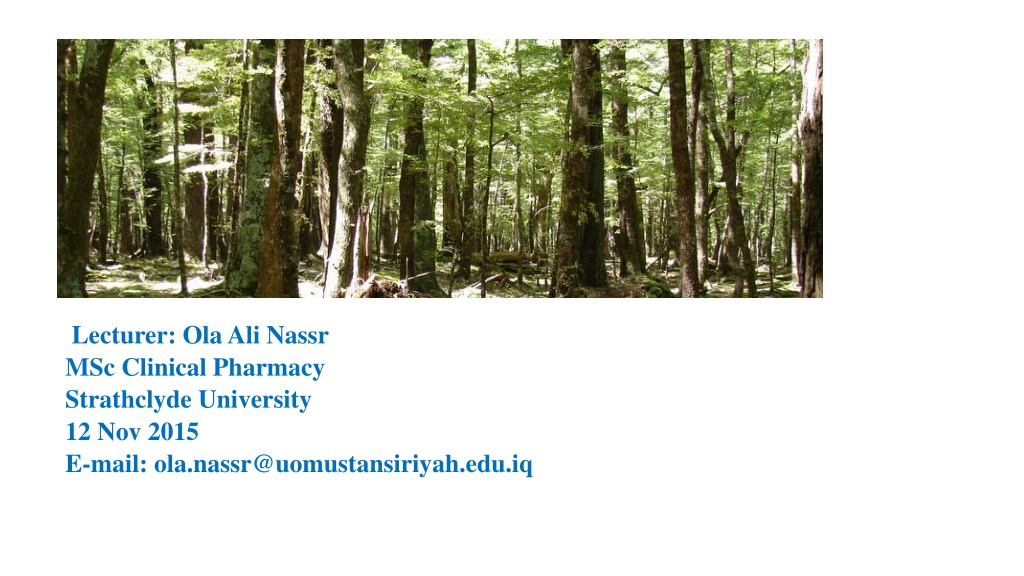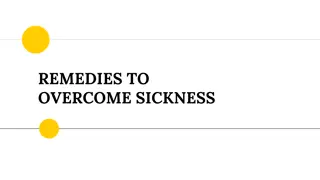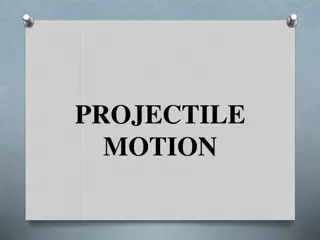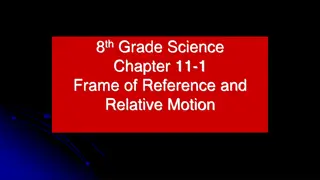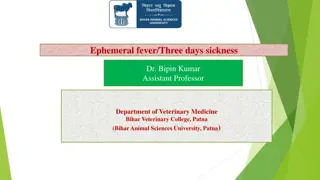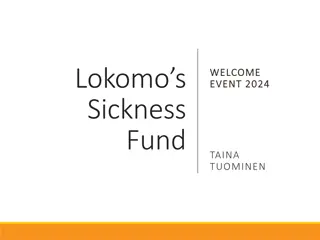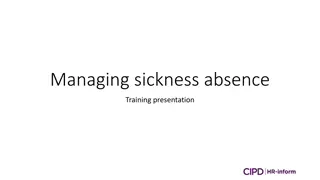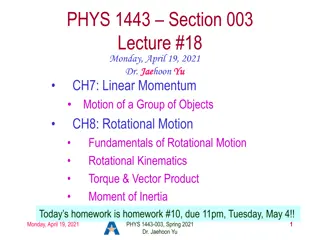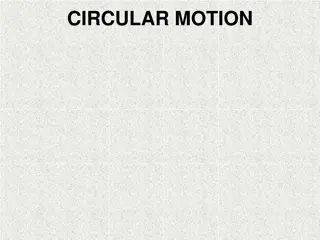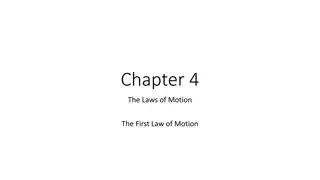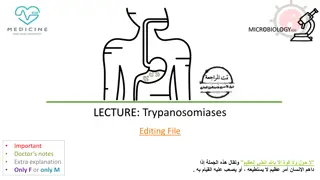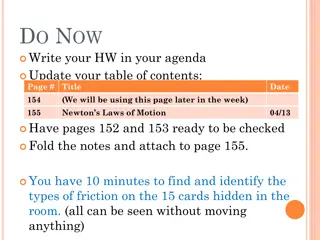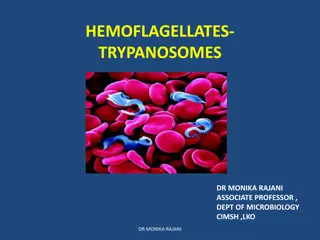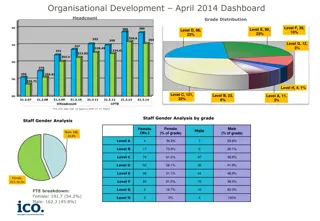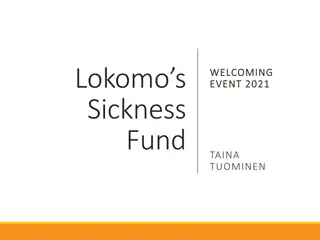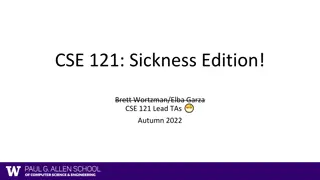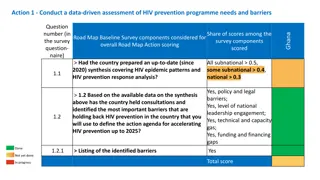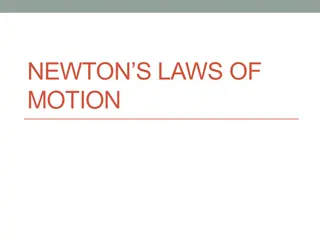Motion Sickness and Prevention Tips
Motion sickness is caused by conflicting messages to the brain, resulting in nausea and vomiting. Learn about its prevention strategies, suitable for all ages and modes of travel, along with the importance of early treatment before symptoms escalate.
Download Presentation

Please find below an Image/Link to download the presentation.
The content on the website is provided AS IS for your information and personal use only. It may not be sold, licensed, or shared on other websites without obtaining consent from the author.If you encounter any issues during the download, it is possible that the publisher has removed the file from their server.
You are allowed to download the files provided on this website for personal or commercial use, subject to the condition that they are used lawfully. All files are the property of their respective owners.
The content on the website is provided AS IS for your information and personal use only. It may not be sold, licensed, or shared on other websites without obtaining consent from the author.
E N D
Presentation Transcript
Lecturer: Ola Ali Nassr MSc Clinical Pharmacy Strathclyde University 12 Nov 2015 E-mail: ola.nassr@uomustansiriyah.edu.iq
Motion sickness and its prevention Motion sickness is thought to be caused by a conflict of messages to the brain, where the vomiting centre receives information from the eyes, the GI tract and the vestibular system in the ear. Symptoms of motion sickness include nausea and sometimes vomiting, pallor and cold sweats. Parents commonly seek advice about how to prevent motion sickness in children, in whom the problem is most common. Any form of travel can produce symptoms, including air, sea and road. Effective prophylactic treatments are available OTC and can be selected to match the patient s needs.
What you need to know: Age Infant, child, adult Previous history Mode of travel: car, bus, air, ferry, etc. Length of journey Medication Age Motion sickness is common in young children. Babies and very young children up to 2 years seem to only rarely suffer from the problem and therefore do not usually require treatment. The incidence of motion sickness seems to greatly reduce with age, although some adults still experience symptoms, and seasickness remains a problem for many.
Mode of travel/length of journey Details of the journey to be undertaken are useful. The estimated length of time to be spent travelling will help the pharmacist in the selection of prophylactic treatment, since the length of action of available drugs varies. Once vomiting starts, there is little that can be done, so any medicine recommended by the pharmacist must be taken in good time before the journey if it is to be effective. The fact that it is important that the symptoms are prevented before they can gain a hold should be emphasised to the parents. If it is a long journey, it may be necessary to repeat the dose while travelling, and the recommended dosage interval should be stressed. The pharmacist can also offer useful general advice about reducing motion sickness according to the method of transport to be used. For example, keeping still, if possible by choosing a cabin or seat in the middle of a boat or plane, and using a pillow or headrest to help keep the head as still as possible. Children are less likely to feel or be sick if they can see out of the car, so appropriate
seats can be used to elevate the seating position of small children. This seems to be effective in practice and is thought to be because it allows the child to see relatively still objects outside the car. This ability to focus on such objects may help to settle the brain s receipt of conflicting messages. For any method of travel, children are less likely to experience symptoms if they are kept calm and relaxed as much as possible. They can be kept occupied by listening to music or playing games as they are therefore concentrating on something else. However, again, it seems that looking outside at still objects remains helpful and that a simple game, for example, I spy , is better than reading in this respect. In fact, for many travel sickness sufferers, reading or watching a movie exacerbates the feeling of nausea.
Prophylactic treatments for motion sickness, which can be bought OTC, are effective, and there is usually no need to refer patients to the doctor. Anticholinergic activity is thought to prevent motion sickness and forms the basis of treatment by anticholinergic agents (e.g. hyoscine) and antihistamines, which have anticholinergic actions (e.g. cinnarizine and promethazine). Antihistamines Antihistamines include cinnarizine, meclozine and promethazine. Anticholinergic effects are thought to be responsible for the effectiveness of antihistamines in the prophylaxis of motion sickness. All have the potential to cause drowsiness, and promethazine appears to be the most sedative. Meclozine and promethazine theoclate have long durations of action and are useful for long journeys since they need to be taken only once daily. Cinnarizine and promethazine theoclate are not recommended for children younger than 5 years, whereas meclozine can be given to those over 2 years. The manufacturers of products containing these drugs advise that they are best avoided during pregnancy
Anticholinergic agents The only anticholinergic used widely in the prevention of motion sickness is hyoscine hydrobromide, which can be given to children over 3 years. Anticholinergic drugs can cause drowsiness, blurred vision, dry mouth, constipation and urinary retention as side effects, although they are probably unlikely to do so at the doses used in OTC formulations for motion sickness. Children could be given sweets to suck to counteract any drying of the mouth. Hyoscine has a short duration of action (from 1 to 3 h). It is therefore suitable for shorter journeys and should be given 20 min before the start of the journey. Hyoscine patches last much longer (up to 3 days) and may be useful for long journeys; they need to be applied 5 6 h before travelling for best effect.
Anticholinergic drugs and antihistamines with anticholinergic effects are best avoided in men with lower urinary tract symptoms because of the possibility of urinary retention, and in people with glaucoma because the intraocular pressure might be increased. Pharmacists should remember that side effects from anticholinergic agents are additive and may be increased in patients already taking drugs with anticholinergic effects, such as oxybutynin and other drugs used for urinary symptoms, tricyclic antidepressants (e.g. amitriptyline), butyrophenones (e.g. haloperidol) and phenothiazines (e.g. chlorpromazine). It is therefore important for the pharmacist to determine the identity of any medicines currently being taken by the patient. Table 2.2 summarises recommended doses and length of action for the treatments discussed.
